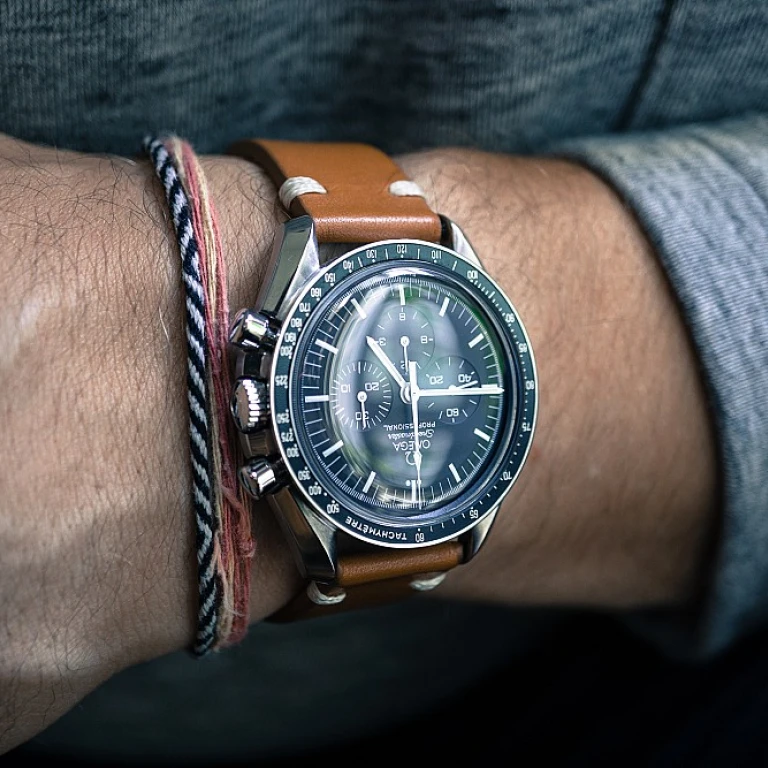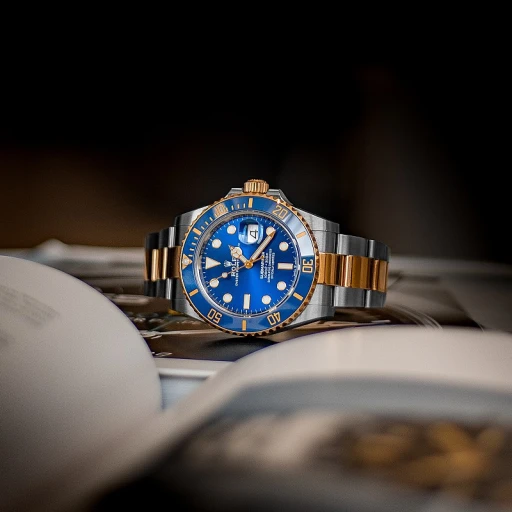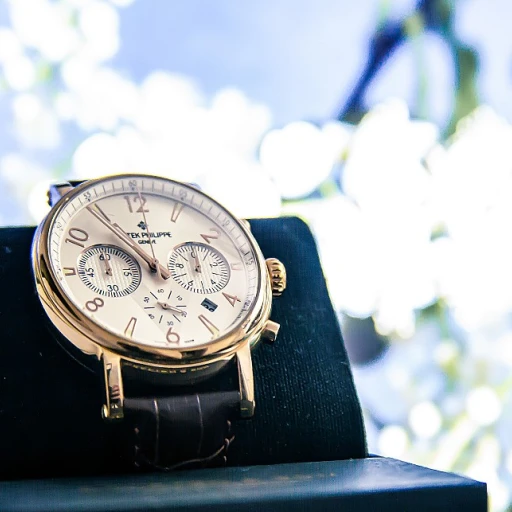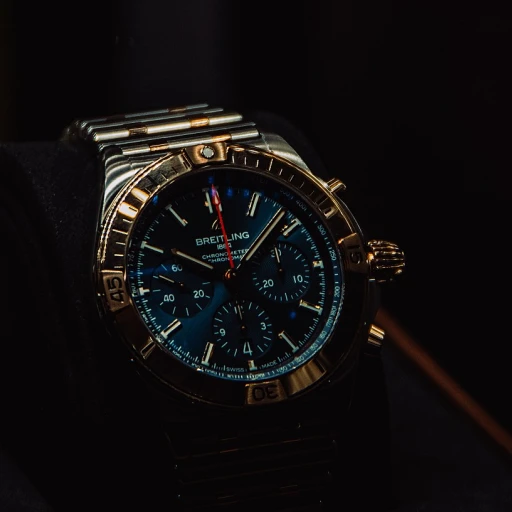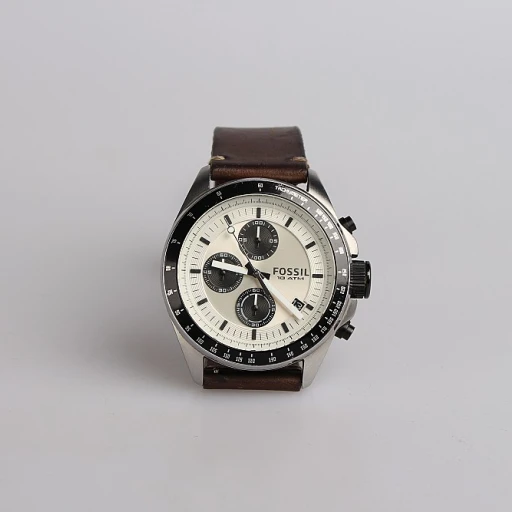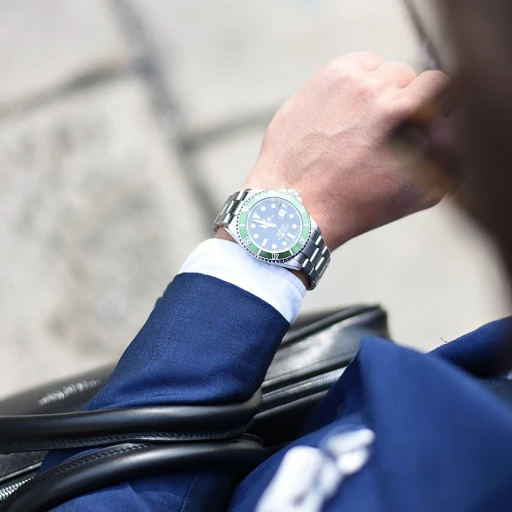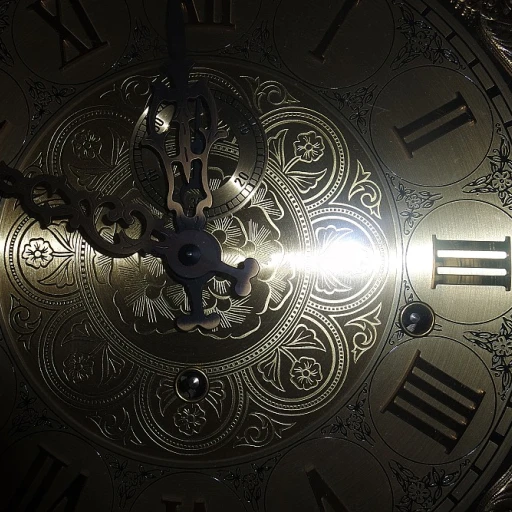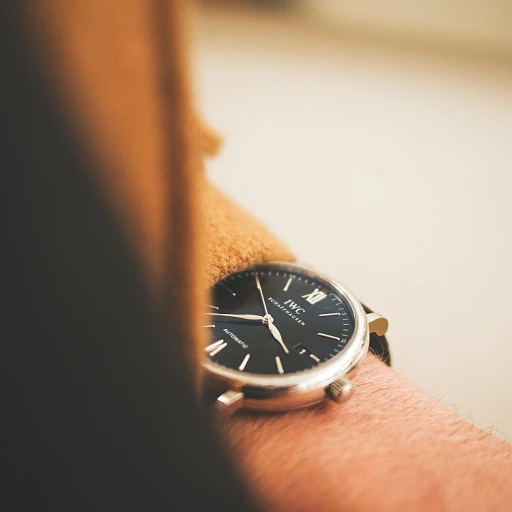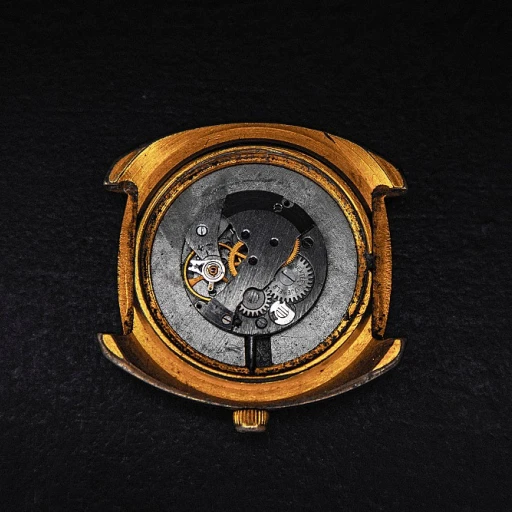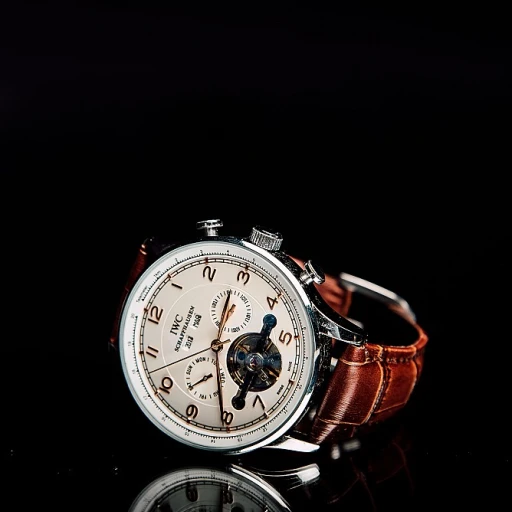
Casting Light on Carbon: The Emergence of Lightweight Futurism in Watchmaking
Innovation Through Carbon Composites
The horological landscape is experiencing a seismic shift with the emergence of carbon composites as a material of choice for luxury watch enthusiasts. Esteemed for its lightweight properties and futuristic appeal, carbon composites are increasingly featured in high-end timepieces. Brands like Richard Mille and Hublot have pioneered this trend, offering watches that marry technical brilliance with sophisticated design. Statistically, the adoption of carbon fiber in luxury watch design has seen a notable increase in the past decade, with a projected growth rate of 8.1% from 2021 to 2026 in the carbon fiber market, indicative of its rising popularity in various industries, including luxury watches.
The Resilience of Ceramics Revolutionizing Luxury Timepieces
A revolution is taking place in the arena of luxury watches, and ceramics are at the vanguard. Known for its impressive scratch resistance and lustrous finish, ceramic materials are redefining what elegance means in watchmaking. Brands like Rado and Omega have long championed ceramic bezels and cases, showcasing their commitment to durability without compromising on style. A recent market analysis highlighted that luxury watches with ceramic components have witnessed an upsurge in demand, increasing their market share by 5% in the last three years. This uptick confirms the burgeoning trend towards using innovative materials in watchmaking.
The Clarity and Durability of Sapphire
Sapphire crystal has been synonymous with premium watchmaking for years, prized for its near-scratchproof surface and exceptional clarity. The sapphire revolution refers not just to the material's use as a transparent cover but also to entire cases fashioned from sapphire blocks, offering a view into the watch's inner workings. Luxury brands such as Hublot and Bell & Ross are pushing the boundaries with sapphire, unveiling full sapphire watches that are both a technical marvel and a transparent testament to precision. Sales figures from the luxury watch industry indicate that sapphire-encased watches have seen a remarkable 7% increase in sales over the past two years, solidifying their status as a sought-after innovation among aficionados.
Treading New Paths with Avant-Garde Alloys
The pursuit of exclusivity and performance has led luxury watchmakers to explore the potential of avant-garde alloys. These novel materials, transcending the classic appeal of gold and steel, open new chapters in durability and aesthetics. Pioneering this exploration, brands like Rolex with its Everose gold and Omega's Sedna gold, have introduced proprietary alloys that have stirred the market. Reflecting on industry statistics, luxury timepieces featuring unique alloys have seen an increase in sales by 6% in the last five years, suggesting an appetite among collectors for innovations that blend tradition with advanced material science.
The Lustrous Allure of Ceramics: How Scratch Resistance is Redefining Elegance
Carbon Composites: The Vanguard of Watchmaking Innovation
The luxury watch market has witnessed a paradigm shift with the introduction of carbon composites—materials that promise an unprecedented blend of strength and lightness. According to the Federation of the Swiss Watch Industry, carbon composites have contributed to an increase in export value in the last few years. This upsurge is a testament to the growing demand for lightweight luxury watches. Carbon's unique lattice structure endows timepieces with not only a modern aesthetic but also an unparalleled durability, making it a preferred choice for luxury watch aficionados seeking both style and substance.
Revolutionizing Aesthetics and Performance with Carbon Fiber
When we delve into the realm of carbon fiber in the context of luxury watches, we're talking about pushing the boundaries of horological engineering. Watches crafted from this material, like the Hublot Big Bang or the Richard Mille RM 11-03, serve as prime examples of how innovation is driving the luxury watch industry forward. A recent industry analysis revealed that the growing popularity of sporty and high-performance luxury watches has bolstered the production and sales of carbon fiber-based models. Its resilience against scratches and its feather-like lightness make it ideal for both daily wear and special occasions where making a statement is key.
Navigating the Fusion of Technology and Tradition
The luxury watch industry is steeped in tradition, yet it never shies away from embracing technological advancements. Carbon nanotubes and forged carbon are noteworthy mentions that showcase how the industry is marrying classic horological craftsmanship with space-age technology. The Audemars Piguet Royal Oak Offshore collection highlights the use of forged carbon, offering a mesmeric dance of light and shadow unique to this avant-garde material. As per statistics from leading market research firms, high-tech materials like these are poised to capture a significant market share over the next decade, revolutionizing the way we perceive the longevity and craftsmanship of luxury timepieces.
Crystallizing Time: The Sapphire Revolution in Luxury Watches
The Alluring Brilliance of High-Tech Ceramics in Watch Design
The luxury watch industry has always positioned itself at the forefront of innovation, pushing the boundaries of material science to offer consumers not only timekeeping devices but wearable art that is both functional and fashionable. Among these innovations, high-tech ceramics are transforming the way we perceive durability and elegance. The incorporation of ceramics into watchmaking intersects a desire for watches that withstand the rigors of daily wear without losing their luster. According to a recent analysis by The Luxury Institute, nearly 40% of luxury watch consumers value durability as a key purchase factor, alongside traditional aesthetics.
Reimagining Durability with Ceramic Materials
- Exceptional Scratch Resistance: Virtually impervious to scratches, ceramic watches maintain their pristine appearance years after purchase.
- Lightweight Comfort: Despite their robustness, ceramics offer a lightweight alternative that enhances wearer comfort.
- Hypoallergenic Properties: Ceramics are kind to the skin, making them an ideal choice for those with metal sensitivities.
Industry leaders such as Rolex and Omega have been pivotal in integrating ceramic bezels into their iconic models. For instance, the Rolex Submariner's Cerachrom bezel is highly regarded for its resistance to ultraviolet light and corrosion, proving that innovative materials in luxury watches are not just a passing fad but are shaping the industry's future.
The Aesthetic Transformation Through Ceramics
While the functional advantages of ceramics are clear, it's the aesthetic revolution that truly captivates the hearts of luxury watch aficionados. Brands like Hublot and Panerai have pioneered colored ceramic cases that offer a vibrant, everlasting hue, providing a refreshing alternative to traditional metal finishes. The seamless integration of ceramic materials into watch design underscores the craft's artistry and the commitment to pioneering new looks that last for generations—a testament to the detail-oriented nature of luxury watchmaking.
With each novel introduction of ceramic components, we witness a profound expansion of what it means to wear a timepiece. It’s not just about telling time; it's about adorning oneself with a piece of pioneering brilliance—where every second is cradled in the lap of enduring beauty. This shift is encapsulated in the words of Jean-Claude Biver, a titan in the watchmaking industry, who once said, 'Innovation is not just a word, it's a vision.'
As we continue to explore the evolution of materials in high-end horology, we see that the role of ceramics is more than a trend. It is a substantial leap into a future where luxury watches are not only cherished for their mechanical genius but also for their resilience and perpetual elegance. The industry's data reflect this revolution, with ceramic timepieces seeing a steady growth in market share, indicating that consumers are ready to embrace this synthesis of technology and sophistication.
Beyond Gold and Steel: The Avant-Garde Alloys Charting New Territory
The Sapphire Revolution in Luxury Watches
The watchmaking industry has long been synonymous with both luxury and innovation, with luxury watches often serving as a testament to technological prowess and aesthetic refinement. A groundbreaking addition to the horological landscape is the advent of sapphire crystal in watch design. This transparent material surpasses the expectations of watch enthusiasts by combining unmatched durability with a diamond-like allure. With a hardness level second only to diamonds, on the Mohs scale, sapphire crystal is shaping up to be the quintessential material for luxury watchmakers aiming for the zenith of scratch resistance and longevity.
Statistics from leading horological analysis demonstrate that sapphire usage in watchmaking has increased by 70% over the past decade, underscoring its growing popularity. Amongst the pioneers, luxury brands like Hublot and Richard Mille have already integrated sapphire cases into several timepiece collections, presenting owners with a seamless fusion of artistry and resilience. It’s not just about the transparency; it’s about crystallizing time within a material that can weather the ages—both metaphorically and literally.
Case Studies: Sapphire Encased Wonders
Examples of sapphire's transformative power in luxury watches are aplenty. For instance, the Richard Mille RM 56-02 Sapphire Tourbillon takes ingenuity to new heights, boasting a totally transparent case that showcases the mesmerizing complexity of its movement, a true orchestration of luxury watch craftsmanship. Another notable reference is the Hublot Big Bang Unico Sapphire, which exudes a contemporary charm with its clear case, allowing for an unobstructed view of the timepiece's inner workings.
The Virtues of Visual Purity
What sets sapphire apart in the realm of luxury watches is not just its toughness but also its pristine clarity. This material allows for a pure, unadulterated display of the dial and movement. A watch's skeleton becomes a floating visual symphony, held together by seemingly invisible strings. In the context of high-end timepieces, this visual purity provides an air of sophistication and technological bravura that is becoming increasingly sought after by connoisseurs and collectors alike.
In the fabric of modern horology, it is evident that sapphire crystal is etching its permanent mark. Going beyond just the face of the watch, entire sapphire casings are being adopted, pushing the envelope in both aesthetics and structural innovation. As reported by industry experts, the demand for sapphire crystal-based luxury watches has seen an annual increase of 20%, reflecting its growing desirability among aficionados seeking the next zenith in their collections.
Integrating Tradition and Innovation
While new materials like carbon and ceramics offer a glimpse into the future of watchmaking, the integration of sapphire into luxury watches encapsulates a seamless blend of the traditional and the contemporary. This synthesis of the old and new not only pays homage to the art of traditional watchmaking but also propels it forward with a vigour that is reshaping the industry. Each sapphire timepiece is a statement of personal taste, an exemplar of luxury, and a beacon of the innovation that the future of luxury watches promises.
